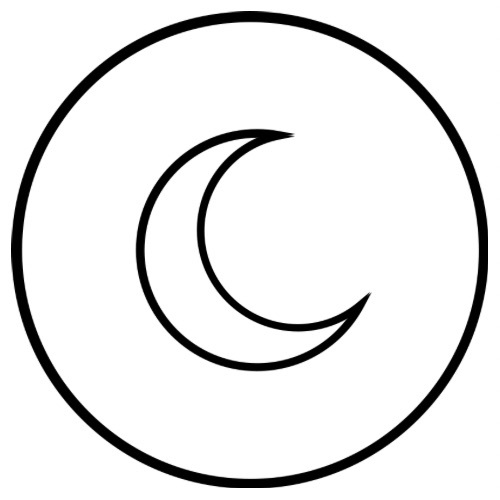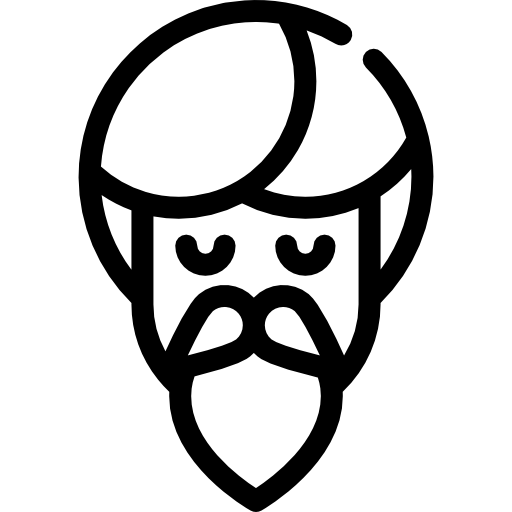
Alchemy of breath
Take one big inhale that expands in your belly. Hold it. Now exhale deeply.
Take one big inhale that expands in your belly. Hold it. Now exhale deeply.
Congratulations, you’ve just engaged in breathwork, an ancient practice that’s quickly gaining popularity. If you’re thinking, “Wait, I’ve been inhaling and exhaling continuously since the day I was born. Does that mean I’ve been practicing breathwork this whole time?” the answer is, unfortunately, no.Most of the time, we don’t even realize we’re breathing — it just happens automatically while we go about our day. That kind of breathing is certainly important for keeping us alive, but a true breathwork practice is about the intentional manipulation of breath.
People across the world have discovered the inner truth of reality through entering into breathwork sessions for life, to be able to see clearly, listen and be in this life. if you wanna know these deep secrets of life about yourself join our 11-day yogic breath workshop.

Yogic breathwork
chale vāte chalaṃ chittaṃ niśchale niśchalaṃ bhavet||yoghī sthāṇutvamāpnoti tato vāyuṃ nirodhayet || 2 || h.y.p ch-2.2
An ancient breathing practice to work on the conscious mind, body, and spirit through the help of different controlling abilities on our breath(prana).
Practices include being aware of inhaling, exhale, retention, and spaces in between in different variations of speed and experience the effects.
The practice involves various elements to be charged and making them Function in a balanced way to maintain tranquility within the body and mind between earth, fire, air, water, and space(either).
Hatha means balancing of sun and moon, yin and yang, masculine and feminine energy in our self. Through Hatha yogic breathing techniques we will balance our left and the right hemisphere to attain pure bliss.
What is yogic Breathwork?

First of all, we need to understand what is breathwork
Breathwork is a series of Breaths in repetitive ways for several days to attain a transformational experience. Breathwork describes a group of exercises that teach you to manipulate your breathing rate and depth to bring awareness to your breath and ultimately provide the same benefits you might get from a meditative practice.
Most formal practices involve 20 minutes to an hour of sustained, rhythmic breathing techniques. People who practice breathwork describe feeling tingling sensations throughout their body, feelings of clarity, alertness, increased mind-body connection, and even emotional purging.
Eg: where one simply inhales and exhales 108 times in a day and repeats this practice for 21 days.
Now when we talk about yogic, which explains the breathwork is been inspired and designed through ancient pranayama practices merging it with breath workout sessions to achieve the state of tranquility. Yogic breathwork practices are entirely secular and were developed to help people heal their minds or bodies or even to withstand extreme physical conditions.
We have included some of the yogic breathwork sessions of 21 days. You can choose your breathwork and do it for 21 days.
History of breathwork
- Holotropic breathwork
- Shamanic breathwork
- Rebirthing breathwork
- Clarity breathwork
- Yogic breathwork

The goal of yogic breathwork
In general, the goal of any breathwork therapy is to support people in achieving a greater sense of self-awareness and capacity for self-healing. It also helps people work toward overall improvement in mental, physical, and spiritual well-being. yogic Breathwork therapists, or Breathworkers as they are sometimes called, guide participants through various therapeutic yogic breathing techniques.
Breathwork therapy is thought to benefit people experiencing issues such as:
- Anxiety
- Chronic pain
- Anger issues
- Depression
- Trauma and posttraumatic stress
- Grief and loss
- Emotional effects of physical illness
WHAT IS SO SPECIAL ABOUT BREATHWORK
yadā tu nāḍī-śuddhiḥ syāttathā chihnāni bāhyataḥ |
kāyasya kṝśatā kāntistadā jāyate niśchitam || 19 || hath yog pradipika ch2.19
While various breathing practices have been around for centuries, science is just beginning to provide evidence that the benefits of this ancient practice are real. Studies have found that breathing practices can help reduce symptoms associated with anxiety, insomnia, post-traumatic stress disorder, depression, and attention deficit disorder.

Alkalizes your blood PH.
The physiologic changes we see during sustained, rhythmic breathing are caused by a shift of the blood pH that follows hyperventilation – a state called “respiratory alkalosis.” Thanks to the field of anesthesiology we know a lot about what the body does during respiratory alkalosis.
You probably remember that we take in oxygen during the inhale breath and get rid of CO2 with every exhale. When we take faster breaths we get rid of more CO2. CO2 is an acidic molecule, so you can think of hyperventilating as getting rid of acid in the blood and shifting to a higher, or more alkaline pH (thus the term respiratory alkalosis).
Increases muscle tone.
When the blood becomes more alkaline a few things happen. First, calcium ions floating around in the blood go into hiding, binding onto large proteins in the blood called albumin. The body now experiences a short-term low-calcium state which causes increased firing in sensory and motor neurons. The artificially low blood calcium now manifests in the neurological system as tingling sensations, smooth muscle contractions and increased muscle tone. If you’ve ever not been able to move your mouth after a breathwork class you know this feeling too well.
Has an anti-inflammatory effect.
Neurons in the autonomic nervous system also fire more during hyperventilation, releasing epinephrine (what many people call “adrenaline”). A 2014 study out of Yale School of Medicine found that the epinephrine surge causes the innate immune system to increase its anti-inflammatory activity and dampen its proinflammatory activity. Subjects who were taught a breathwork routine had less severe inflammatory responses after exposure to IV bacterial toxins than those who didn’t. The paper was the first in scientific literature to describe voluntary activation of the innate immune system.
Elevates your mood.
The “high” feeling some people experience during breathwork can also be explained by hyperventilation and respiratory alkalosis. Increased blood pH decreases oxygen delivery to tissues (a phenomenon called the Bohr Effect). Within one minute of hyperventilation, the vessels in the brain constrict, reducing blood flow and oxygen delivery to the brain by 40%. The effect is probably responsible for the feelings of wellbeing that breathwork practitioners experience. That’s right — you are actually getting a little high in your Kundalini yoga class.
How to approach yogic breathwork
- It is safest and most effective when guided by an experienced teacher who knows your needs and capability
- there are several simple techniques you can try at home as long as you’re in good health
- don’t push beyond your capacity.
- As you continue to practice these techniques over time, you may start to notice when you are unintentionally holding your breath or breathing shallowly.
- You also may begin to associate patterns of the breath with your moods or states of mind. This self-awareness is the first step toward using the practices of pranayama to help shift your patterns and, through regular practice, create positive change in your life.
- Try each practice daily for a week and observe how it affects your body, breath, and mind to figure out which is best for you.
- You can do them at just about any time of day, though preferably not immediately following a large meal. Should be done empty stomach
- duration of the breathwork: Each session will be around 45 to 60 min
INSTRUCTIONS:
- Practices are Done lying down or sitting position mostly.
- To bring about self-awareness, breathwork can include elements of talk therapy, breathing exercises, art, music, and bodywork.
- This therapy can be used with individuals, couples, and groups.
- It should be facilitated by a certified professional.
- Some practices might involve some body movement
- Practices can be done for 20 min to 60. And also according to your ability, you grow gradually
- Breathwork is a general term used to describe any type of therapy that utilizes breathing exercises to improve mental, physical, and spiritual health.
Concept: Pancha prana (life force)
There are five prana vayus, currents of energy or pranic air functions in the body.
We focus on these 5 pranas to make a function in harmony and have no impurities. with our 11-day yogic breath workshop, one can channelize this life force into their daily life
- apana (toxins, waste)
- prana, (upward motion)
- samana, (balanced, digestive fire)
- udana and (emotions)
- vyana. (Body Movement)

When these five vayus function in harmony, they bring health and vitality to the body and mind. They are associated with different parts of the body and have different functions:
- Prana Vayu is associated with the chest and head and governs intake, inspiration, propulsion, forward momentum.
- Apana Vayu is related to the pelvis and governs elimination, downward and outward movement.
- Samana Vayu is around the navel and governs assimilation, discernment, inner absorption, and consolidation.
- Udana Vayu is associated with the throat and governs growth, speech, expression, ascension, and upward movement.
- And finally, vyana vayu is related to the whole body, governs circulation on all levels, expansiveness, and pervasiveness
About our 11 day yogic breath workshop
- Alternative nostril breathing(purification)
- Breath of victory (ujjain pranayama)
- Breath of fire (bhastrika)
- Breath of shinning skul(kapalabhati)
- Breath of ocean(shitkari /shitali)
- Breath of sun (Abodinal breathing)
- Breath of moon(thorasic breathing)
- Full yogic breathing
- Breath and body (Sukshma vayama)
- Breathing and kriyas (shakti prana)
- Conscious breath (savasana)
- Your experience and process with breathwork will be unique.
- It’s a process of self-purification and realization
- brings improvements in an emotional state
- decreases levels of stress, anxiety, pain, traumas, depression, chronic pain
- Hatha yogic Breathwork is more than an exercise of breathing correctly it is a transformational experience
- Breathing techniques are tools for major healing and spiritual purpose.
- Hath yogic breathwork encompasses a broad range of whole-being therapeutic practices and exercises used to relieve mental, physical, and/or emotional tension.
Meet your Breathworker





